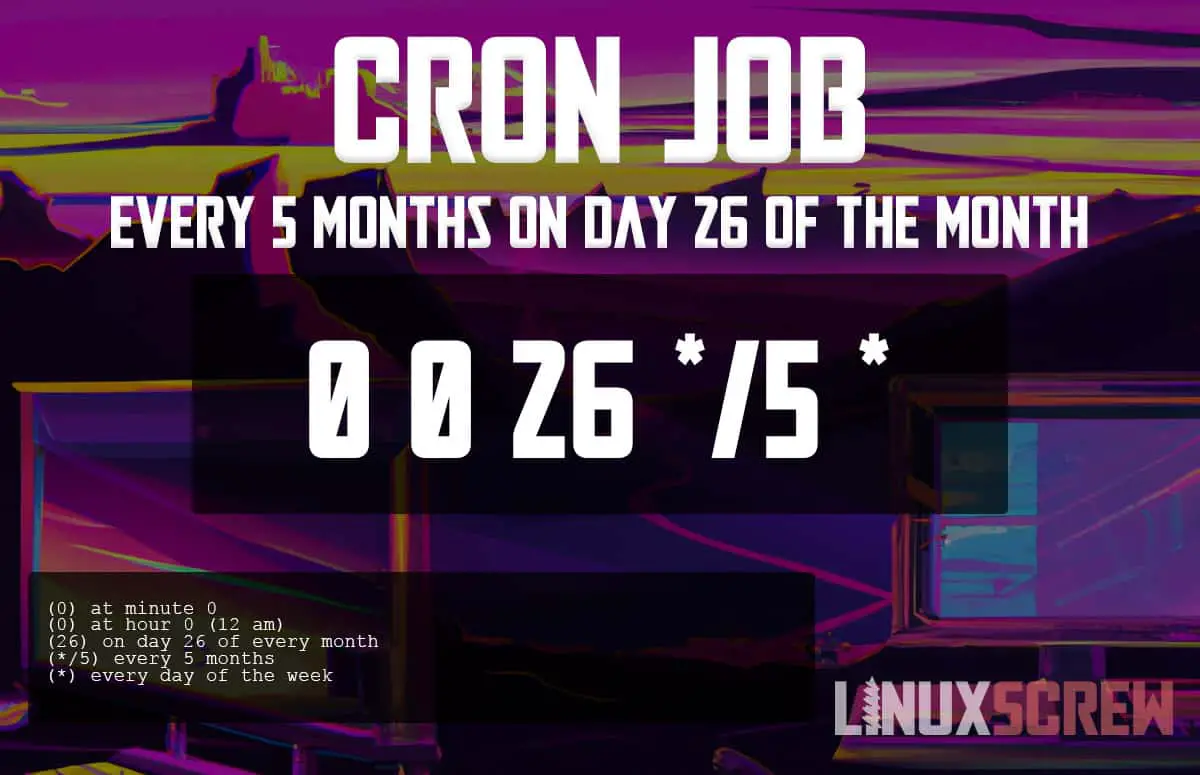This page will help you quickly and easily set up a cron job to run every 5 months on day 26 of the month.
The Cron Job/Crontab
To have your task run at this frequency, use the following cron:
0 0 26 */5 *
This cron command translates to the following (in Human-Readable format):
“Every 5 months on day 26 of the month.”
What is a Cron Job & Crontab?
A cron job is a time-based task that is set to run at specific intervals. This can be anything from running a backup script every night to sending out an email notification once a week. Cron jobs are typically used for maintenance or repetitive tasks.
A crontab is a file that contains commands to be run at specified times. The crontab file is typically edited using the crontab command, which can be used to list, edit, or delete the contents of the file.
Cron Fields
Every cron job uses five fields. Here is an explanation of what each field does in this cron, which runs “every 5 months on day 26 of the month“:
FUN FACT: Cron jobs are automated processes that run on a schedule..
Use Cases
You might want to set up a crontab or cron job to run every 5 months on day 26 of the month for several reasons, including:
- Checking for updates to a software package
- Rotating log files
- Sending out monthly newsletters
- Generating reports
Similar Cron Jobs
You might also want to run a crontab:
- every 2 months
- every 6 months
- every 5 months
- every 1 month
- every 3 months
- every 4 months on day 23 of the month
- every 5 months on day 24 of the month
- every 3 months on day 16 of the month
FUN FACT: The most common way to edit cron jobs is using the crontab command – this stands for “cron table,” and it contains all the information about when your tasks should be executed..
Wrapping Up
In this article, you learned how to set up a cron job that runs every 5 months on day 26 of the month. Please share this page with friends and colleagues if you find it useful.
If you have any questions, please don’t hesitate to comment below.
If you are looking for cron jobs that run at certain minutes, hours, days, weekdays, or months, or if you are looking for miscellaneous cron jobs, then check out our relevant sections, or visit our crontab cheat sheet for a list of hundreds of popular cron jobs.

